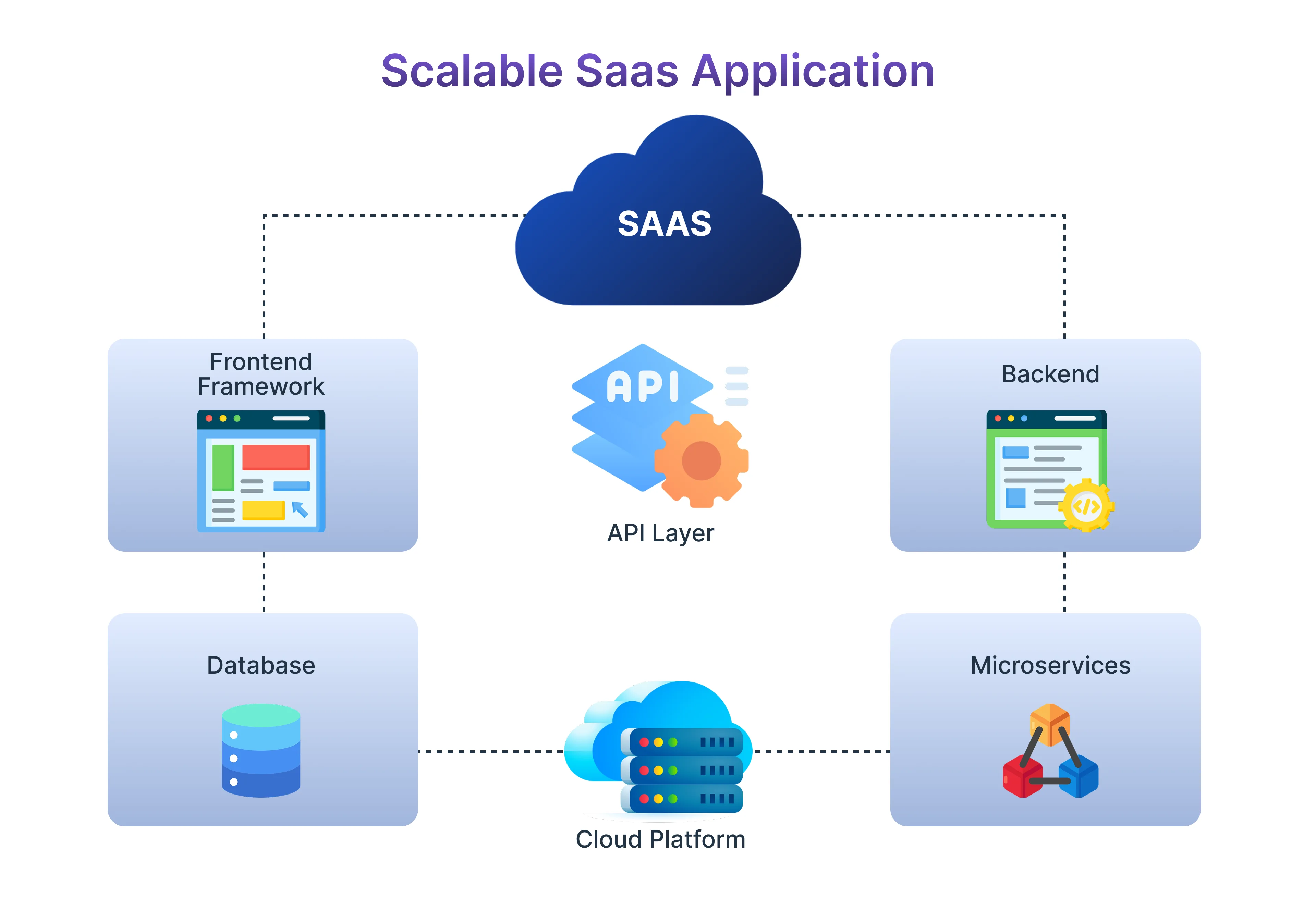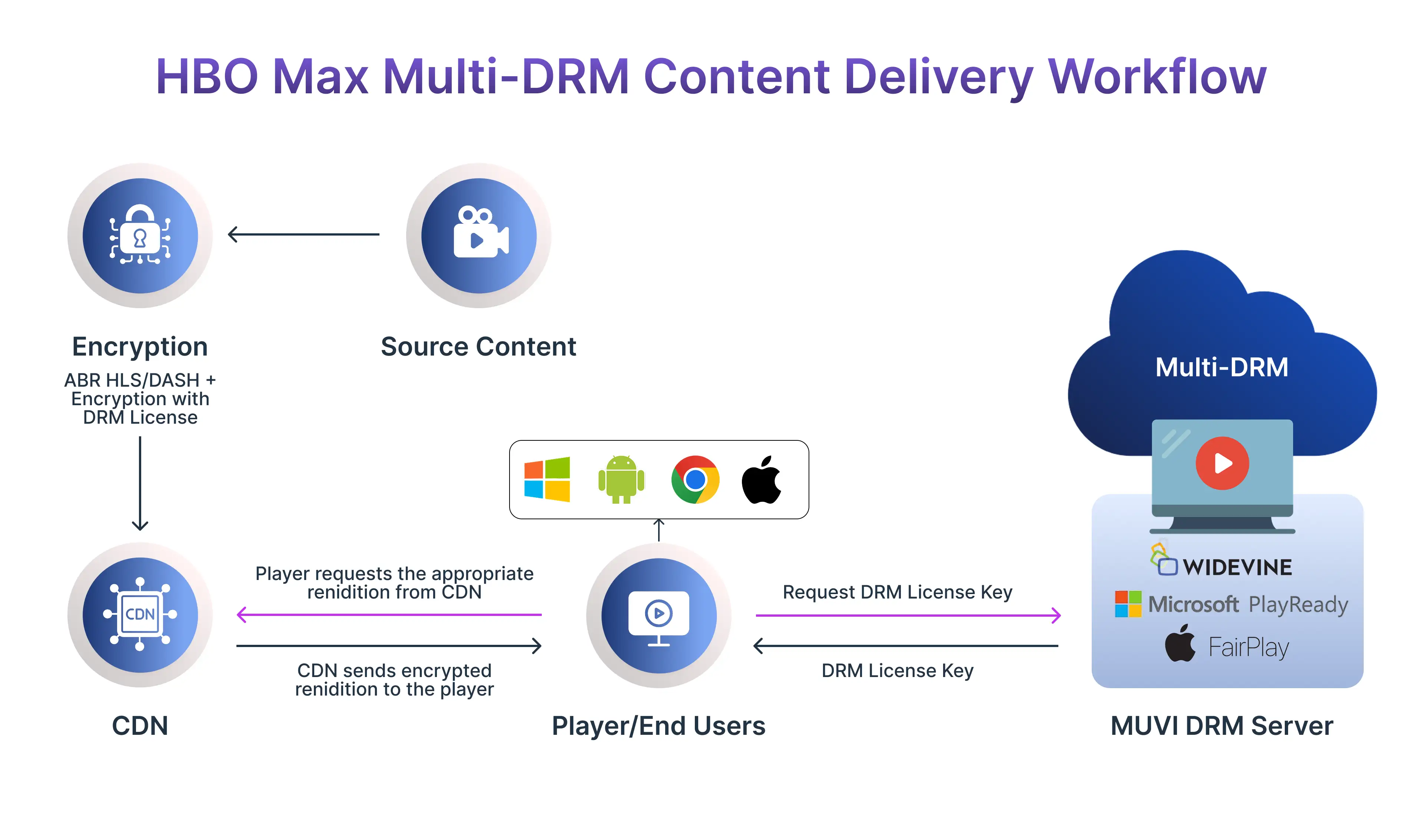HBO Max - backed by Warner Bros. Discovery, Warner Media, Warner Media Direct, and Warner Media Direct LLC - has rapidly become one of the most technologically advanced streaming entertainment ecosystems in the world. The platform offers a diverse catalog. It includes HBO Max movies, HBO Max shows, HBO Now, HBO Go, legendary series like The Sopranos, superhero universes such as DC Universe, and prestigious libraries like Studio Ghibli, Criterion Collection, and Warner Bros. classics. This variety has made it a top global destination for high-quality original programming.
Behind this entertainment powerhouse is a sophisticated streaming infrastructure. The platform seamlessly delivers HD, 4K, and HDR content across devices like Apple TV 4K, Roku Ultra, VIZIO Smart TVs, Xfinity X1, and Chromecast Ultra, while integrating tools like Open Broadcast Studio (OBS) and Open Broadcast for live workflows. Users rely on HBO Max for everything from browsing HBO listings, TV broadcast listings, and HBO broadcast schedule to activating devices via HBO Max activate.
A highly engineered system makes all this possible. It involves content delivery network caching, cloud infrastructure, advanced video compression, global load balancer systems, Kubernetes auto-scaling, AI-based personalization, performance analytics, and strict content protection layers. This blog breaks down the technology that powers HBO Max's global high-definition streaming.
How HBO Max Delivers HD Streaming
HBO Max delivers HD streaming through a globally distributed, cloud-native delivery architecture that ingests and processes content—from original programming and broadcast events to licensed international titles—via automated transcoding pipelines, metadata normalization systems, and CMAF-based HLS/DASH packaging. With unpredictable user environments, varying internet download speed, and inconsistent network bandwidth, the platform leverages multi-tier CDN caching, edge compute nodes, protocol-aware traffic routing, and adaptive bitrate algorithms to maintain consistent low-latency playback. This elastic orchestration of encoding, delivery, and network optimization ensures stable, high-definition streaming performance at global scale.
H3-CDN Architecture & Adaptive Bitrate Control
At the core of HBO Max’s video delivery is a globally distributed content delivery network fortified with:
- Multi-layer content delivery network caching – Uses multiple caching layers across global CDN nodes to store frequently accessed content closer to users. This reduces latency, speeds up delivery, and ensures smoother playback during peak demand.
- Private edge locations – Deploys dedicated edge servers in strategic regions to bring content even closer to end-users. This improves load times, reduces network hops, and enhances the overall streaming experience.
- Open Caches systems – Implements open caching frameworks to optimize content distribution across ISP networks. These systems increase efficiency, lower delivery costs, and improve local streaming performance.
- P2P-assisted distribution via P2P distribution – Enhances scalability by allowing users’ devices to share content segments with one another. This reduces CDN load and stabilizes streaming quality during high-traffic events.
- Techniques informed by Streaming Video Alliance research – Incorporates industry best practices and technical insights from SVA to enhance streaming quality, reliability, and interoperability across global networks.
- Innovations inspired by Open Connect architecture – Adopts design principles used in large-scale streaming architectures to optimize traffic flow, reduce congestion, and ensure consistent high-quality delivery worldwide.

Each title - whether it’s content from DC Universe, evergreen hits like The Sopranos, or newly added original programming - is transcoded, replicated, and delivered through distributed caches close to user locations.
Adaptive Bitrate Streaming (ABR) ensures seamless playback across unstable networks. ABR adjusts video quality dynamically based on device capabilities, network bandwidth, and available delivery protocols, enabling consistent HD and 4K HDR Dolby Atmos performance.
This architecture supports massive viewer spikes triggered by new releases, global premieres, or content rotations within the Premium plan, monetisation models, or theatrical window strategies.
Playback Optimization Across Devices and Networks
HBO Max’s device ecosystem is broad - spanning Roku for Warner Media, Apple TV+, Amazon Prime Video, HBO Go, HBO Now, Roku Ultra, and other platforms.
Playback optimization includes the following.
- Device capability analysis (HD, 4K, HDR, HDMI cable types, HDMI 2.0, HDCP 2.2)
- Network-aware performance tuning
- Compatibility across global content bundles
- Adaptive algorithms supporting kids experience, audio description, and sign language features
Cross-device tuning ensures that both legacy and modern hardware receive smooth, high-quality streams.
Scalable Cloud Architecture
HBO Max handles billions of monthly streaming minutes. To support new territories, market expansion, different subscription tiers, and content demand fluctuations, the platform relies heavily on scalable, global cloud systems.

Distributed Microservices & Traffic Orchestration
Hundreds of microservices handle everything from:
- User onboarding – Smooth registration flows guide new users into the platform quickly and effortlessly.
- Personalised recommendations – ML-driven systems deliver content suggestions tailored to each viewer’s tastes.
- Content catalogs – A dynamic, metadata-rich library organises and surfaces all available shows, movies, and collections.
- Billing and monetisation models – Flexible subscription and payment frameworks support multiple pricing tiers and revenue streams.
- Device activation – Secure activation flows connect user accounts across TVs, mobile devices, and streaming platforms.
- Playback authentication – Robust validation ensures only authorised users access protected streaming content.
- Premium-tier workflows like Premium plan enhancements – Advanced system logic powers exclusive features, higher-quality streaming, and added benefits for premium subscribers.
Traffic is routed via:
- Global load balancer systems – Direct traffic intelligently across worldwide regions for stable, high-performance streaming.
- EC2 load balancer fleets – Scalable AWS-based balancers distribute workloads efficiently across large compute clusters.
- Load balancer service Kubernetes components – Kubernetes-managed load balancers route microservice traffic with automated scaling and resilience.
- Load balancer networking optimized for low latency – Fine-tuned routing paths minimize delay and deliver faster playback responses.
- Pricing-efficient routing via load balancer cost and load balancer AWS pricing strategies – Smart routing decisions reduce operational costs while maintaining performance.
- Regional routing based on health checks and capacity – Traffic is dynamically shifted to the healthiest and most capable regions for uninterrupted service.
HBO Max runs its microservices on container platforms using:
- Kubernetes auto scaling - Automatically scales the resources in containers depending on the real-time demand to keep the services flowing.
- Horizontal auto scaling - Horizontal scaling is used to add or remove instances of the services in response to the changing load.
- General auto-scaling - Scales up or down the total system capacity to guaranty optimum operation at all workloads.
These systems ensure the platform efficiently handles spikes during major releases, high-demand seasons, or global events such as the Summer Olympics.
HD Video Encoding Workflow
To meet expectations for calidad 4K, Dolby Atmos, and cinema-level fidelity, HBO Max invests in an advanced video processing pipeline that enhances the Warner Bros HBO Max subscription experience while ensuring seamless performance across all stages of HBO Max device activation.
Unified 4K/HDR Encoding & Advanced Compression
HBO Max leverages unified 4K/HDR encoding pipelines combined with advanced compression algorithms such as AV1 and HEVC to deliver ultra-high-definition content with optimal bandwidth efficiency. The platform integrates dynamic tone mapping, color gamut preservation, and multi-layer bitstream optimization across devices, ensuring consistent HDR performance. These end-to-end encoding workflows, orchestrated through automated cloud pipelines, reduce latency, minimize storage overhead, and maintain visually lossless quality even at scale, enabling seamless 4K/HDR streaming for global audiences.
HBO Max optimizes content through:
- Multi-pass encoding – Refines video quality through multiple analysis passes for sharper, more efficient output.
- Modern codecs (amid ongoing codec wars) – Uses next-generation codecs to deliver high-quality streams at lower bitrates.
- Frame-level analysis – Optimizes every single frame to enhance clarity, motion handling, and compression efficiency.
- High-density cloud compute clusters – Leverages powerful cloud compute nodes to process large-scale video workloads quickly.
- Automated performance testing pipelines – Continuously tests video quality and stability through fully automated validation systems.
- Compliance with global delivery protocols – Ensures every asset meets international streaming standards for seamless worldwide distribution.
The platform optimizes content from leading franchises and high-value original programming. Its encoding workflows respect licensing agreements, content deals, and release windows, ensuring consistent quality across all HBO Max movies and shows.
Intelligent Content Discovery Systems
With vast content libraries that include The Sopranos, The Big Bang Theory, global hits, original programming, and timeless collections, content discovery must be intelligent and personalized.
Real-Time Machine Learning Ranking & Personalization
HBO Max deploys advanced ML systems that analyze:
- User viewing history – Analyzes past watch patterns to deliver more accurate content recommendations.
- Trending signals from linear channels & broadcast shows – Uses real-time popularity trends to surface relevant, in-demand titles.
- Metadata from collections like Criterion Collection & Studio Ghibli – Enriches recommendations with deep metadata from premium film libraries.
- Behavioral clusters driving subscriber count – Groups users by behavior patterns to improve targeting and engagement strategies.
- Regional preferences from different markets – Tailors content suggestions to cultural and regional viewing habits worldwide.
The system generates personalised recommendations across all tiers, including Premium plan, ad-supported tiers, and international variations.
Platform Security and Content Protection
Premium content from Warner Bros., HBO, DC Universe, and third-party studios requires robust security and anti-piracy measures, underpinned by cloud infrastructure management services and cloud DevOps services that ensure multi-layer DRM, encrypted streaming, and continuous compliance at scale.
Multi-Layer DRM & Secure Session Management
HBO Max integrates:
- Multi-DRM support – Provides flexible protection by supporting multiple digital rights management systems across devices.
- Encrypted playback – Secures video streams with end-to-end encryption to prevent unauthorised access.
- Tokenized secure session management – Uses secure tokens to validate and maintain protected playback sessions.
- HDCP compliance (HDCP 2.2) – Ensures high-definition content is protected during transmission to displays and external devices.
- Fraud detection – Identifies suspicious activities and unauthorised access attempts in real time.
- Device-based DRM checks – Verifies device security levels before granting access to premium content.

These systems protect everything from blockbuster launches to timeless titles such as The Sopranos, ensuring global rights integrity.
Global Performance Optimization
Delivering HD and 4K content at global scale requires constant tracking, monitoring, and refinement of performance metrics.
Edge Caching & Live QoS Analytics
HBO Max refines performance using:
- Distributed edge caching
- Real-time stream-level QoS signals
- Monitoring infrastructure
- Anomaly detection
- Dynamic rerouting
- Predictive network analytics
These capabilities help maintain stable playback — even during massive global premieres or worldwide streaming peaks.
Monetisation Models & Premium Plan Strategy
HBO Max operates on a hybrid revenue architecture that integrates multi-layered monetisation models—including ad-free, ad-supported, bundled, and international tiers—optimised through regional pricing strategies, targeted ad-insertion engines, and scalable subscription management systems.
- The platform strengthens global reach through enterprise-grade licensing deals with Sky Network Television, Canal Plus, and additional international distributors, ensuring compliant content syndication, territory-based rights management, and high-availability delivery pipelines.
- Its distribution footprint is extended via deep platform integrations and partner ecosystem alignment with Amazon Prime Video, Apple TV+, Roku, and multiple telecom operators. These partnerships leverage unified billing APIs, federated authentication workflows, and cross-platform content discovery mechanisms to maximise user acquisition and retention.
- HBO Max also capitalises on the distribution of original programming and legacy titles sourced from HBO Now, HBO Go, and DC Universe, supported by centralised metadata orchestration, unified content libraries, and multi-region CDN replication.
Collectively, the flexibility of these monetisation strategies drives scalable market expansion, enhances global subscriber growth, and improves content availability through optimised delivery infrastructure and partner-driven distribution channels.
Conclusion - Delivering High-Definition Streaming at Global Scale
As HBO Max continues expanding into global markets, the platform strengthens the engineering foundation that powers its end-to-end streaming operations. Enhancements to the HBO Max Premium plan subscription, refinements in HBO Max monetization models, and deeper integration within the Warner Bros HBO Max ecosystem highlight a commitment to long-term scalability, performance, and platform resilience. These improvements mirror the architectural discipline found in mature web development service ecosystems and modern mern stack development services, where modularity and efficiency define product evolution.
On the technical front, HBO Max leverages distributed microservices, global load balancing strategies, multi-layer CDN caching, containerized Kubernetes deployments, and automated failover mechanisms to support high concurrency across regions. Its advanced media pipeline—featuring real-time adaptive bitrate logic, optimized encoding workflows, multi-DRM security, secure device activation, and ML-powered personalisation—ensures consistent, secure, and high-fidelity playback even under fluctuating network conditions. This engineering rigor reflects the operational patterns of a large-scale web development company focused on reliability and user-centric performance.
Looking ahead, HBO Max remains positioned to lead the next wave of premium streaming innovation worldwide. Continued investment in cloud compute optimization, telemetry-driven observability, edge delivery enhancements, AI-assisted orchestration, and automated content preparation systems will strengthen its ability to meet rising global demand. Supported by the wider Warner Bros HBO Max architecture, the platform is well-equipped to define the future of high-availability, globally distributed digital entertainment.
FAQs
1. What is the response of HBO Max to OTT traffic surges during blockbuster launches?
HBO Max uses predictive traffic modeling, autoscaling clusters, and pre-provisioned cloud capacity to handle peak concurrency. This ensures stable playback with no buffering or service interruptions during major global releases.
2. How is HBO Max’s streaming quality different from traditional cable/satellite providers?
Unlike fixed-bandwidth broadcast systems, HBO Max uses adaptive bitrate streaming to adjust quality in real time based on network conditions. This enables higher resolutions, advanced color formats, and on-demand flexibility that traditional TV cannot match.
3. How does HBO Max ensure seamless operations for international users with regional network constraints?
The platform applies intelligent routing, multi-CDN strategies, and regional edge optimization to bypass congested paths. This guarantees smooth playback even in low-bandwidth or high-latency environments.
4. Which partnerships help HBO Max expand device coverage and smart TV ecosystem compatibility?
HBO Max collaborates with major device manufacturers, telecom operators, and smart TV platforms to ensure native app support and seamless hardware integration. These alliances expand availability across streaming sticks, connected TVs, and mobile ecosystems.
5. Does HBO Max rely on accessibility technologies such as captions, audio descriptions, and adaptive interfaces?
Yes - HBO Max supports multi-language captions, audio descriptions, and customizable interfaces across devices. These accessibility features enhance usability and meet global compliance standards for mobile, TV, and web applications.





%201.webp)
